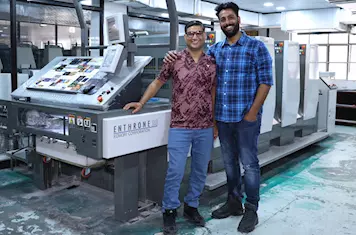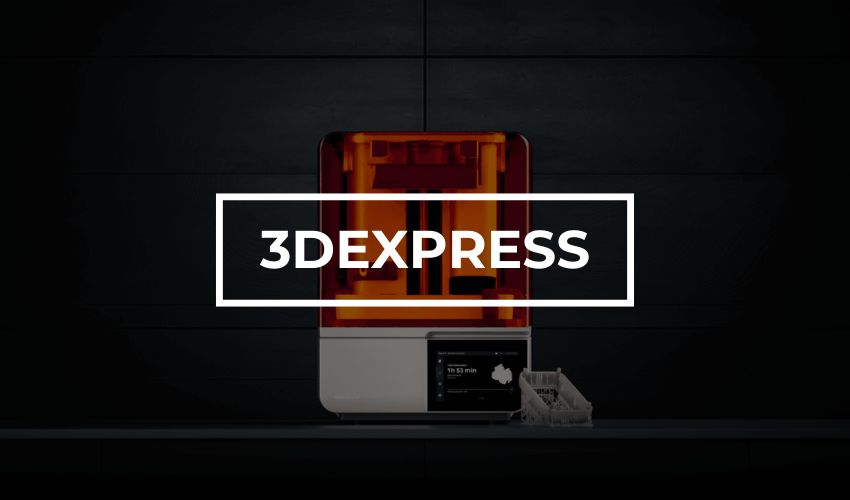City to test 3D printing as potential solution to housing shortage | Real Estate

Artist’s rendering depicts how the 3D house on East Monument Street would look. (Echo Architecture + Interiors)
Patents for 3D printers were first filed in the 1980s. Since then, the technology has expanded to include the ability to print just about everything — including houses.
Some contend that 3D printing homes is both cheaper and faster than traditional construction — so could it be the answer to Colorado Springs’ housing shortage?
City officials say that it is unlikely, at least not for the moment. They deny that 3D-printed homebuilding is cheaper than traditional construction. In fact, the city’s Chief Housing Officer Steve Posey says it’s quite the opposite.
“What we’re finding out is that 3D technology is still more expensive,” Posey said in a September interview with the IndyHe noted that a portion of the cost difference is due to proximity. He said the closest 3D-printed home construction company is based in Denver.
While it’s taken a while for the city to advance its 3D house project, it’s now poised to hire a contractor to print one, along with a companion accessory dwelling unit on a vacant lot owned by the city.
“One reason the city is interested in driving this is, we want to create opportunities for new technology and new companies to come into Colorado Springs,” Posey says.
The state, along with the city of Greeley, announced earlier this month that a 3D printing company is moving there, which could lead to more 3D houses in the northern reaches of the state — and perhaps one day in other parts of Colorado.
Alquist 3D announced that it had relocated its operations from Iowa, to Greeley. It will create 79 full-time jobs, with an average salary of $73,987. Aims Community College will also partner with the company to teach 3D technology, and create a possible workforce. Alquist built the first 3D printed house in the United States for a homeowner, according to a state release.
The city requested proposals last fall for the services of a consultant for a 3D printed house design.
A local firm, Echo Architecture, was hired at a cost of $12.255 to create a concept for the ADU/house.
These plans called for a 1,200 square foot, 3-bedroom home with 2 bathrooms, and a 700 square foot, 1-bedroom ADU, on a plot at 2709 E. Monument St.
Officials from the city say that both structures must be fully ADA-accessible and have energy-efficient components.
By late this year or early next, the city will issue another RFP for a developer-builder-nonprofit team that would actually build the home, and fund it. The cost might be partially offset by state grant money intended for infrastructure and, possibly, funds from the city’s Housing and Urban Development grant, Posey says.

“The reason we want a nonprofit to be involved,” Posey says, “is we expect [it] The buyer could sell the house and rent out the ADU at the rear to another low-income tenant.
“The city won’t own the property at the end of the day,” he adds.
Posey states that officials in the city hope to keep prices below $300,000. At this price, the two units will cost about $157 per square feet. This is much lower than the $220 per foot that Realtor.com reports for the local average home listing. The website reports the median “sold home” price in Colorado Springs is $437,000.
In light of local market prices, a 3D-home could be a great bargain.
Posey says that other local factors also play a role. One, he says, is, “We don’t have a local 3D printing company. One of the challenges is having the equipment ready to go.”
Posey also says it’s not as simple as pouring the concrete walls of a home.
“A 3D printed house is a house with a concrete shell, and that concrete all by itself doesn’t meet local energy efficiency codes,” he says. “So there are challenges in terms of getting that wall assembly suitable for our clients.”
It would be necessary to install additional insulation, increasing the cost.
Posey says that the ability to bring 3D technology up to scale can also affect pricing. It would be cheaper for a firm to pour 100 houses than one house.
The Pikes Peak Regional Building Department, which issues permits and inspects construction, Posey says, “has been very open to this as a concept and generally is very open to doing what they can to make sure innovative construction techniques can come into our market.”
PPRBD spokesman Greg Dingrando says via email that while he can’t speak to price or advantages and disadvantages of 3D construction, local codes would allow for printing a house, he says.
“There is a path for 3D printed construction to comply with local building code requirements,” Dingrando says. “3D printed construction would be considered unconventional construction and therefore would require a licensed design professional to stamp the plans.”
Here is an alternative way of building a home. — Steve Posey
The company, which is relocating to Greeley, expects to create new jobs and teach students about 3D construction and technology. Alquist was approved for up to $1.1 million in incentives by the Colorado Economic Development Commission over an eight-year period and another $335,000 over a five-year period, based on job growth and other performance measures, the state’s news release said. Greeley offered an additional incentive package of $2.85million.
Even Gov. Jared Polis said in a press release that Alquist was part of the formula to lower construction costs and build houses faster.
In a World Economic Forum article published in February, 3D building can be up to 45% cheaper than the traditional method.
According to The Forum, a project that involves about 100 homes in the suburbs of Austin, Texas uses 3D printer robots. This is thanks to a partnership formed by U.S. construction firm Lennar with 3D company ICON.
“Developers say the technology is cheaper, faster and more sustainable than conventional construction methods,” the article says — and it could help the nation solve its housing shortage.

Artist’s rendering of the front (left) and the back of the accessory dwelling unit, which would be co-located on the lot with the main residential unit (Echo Architecture + Interiors)
In an article published in Forum, it is stated that site printers, which are nearly fully automated, can build walls and electrical and plumbing systems three times as fast as traditional methods.
Jason Ballard, CEO of ICON, told CNBC that 3D houses also have “better design, higher strength, higher energy performance and comfort, and increased resiliency.”
The National Association of Home Builders notes on its website that 3D printing homes is “gaining traction” and even Habitat for Humanity has embraced the method — but the Colorado Springs Housing & Building Association appears to be taking a wait-and-see approach.
Asked to comment on how 3D homes could impact the local market, HBA CEO Renee Zentz says via email, “The HBA and its members are focused on building safe homes that follow building codes and utilize the best and most innovative building materials and construction practices. As different technologies like 3D printing evolve, our industry and members will review these new technologies to see if they can help make homes safer, more energy efficient and, most importantly, more affordable.”
Posey suggests that the city could take on another 3D construction project or use some other innovative building method using another city owned lot located in the 700 block East Cucharras Street.
But first, the city must choose a developer for the Monument Street plot, and for now, Posey isn’t seeing any downside.
“The upside is that if it can scale, it could be a solution that helps us meet some of our housing needs,” he says. “In a very broad sense, we have been building houses the same way since the 1950s. This is an example of a different way to build a house.”


